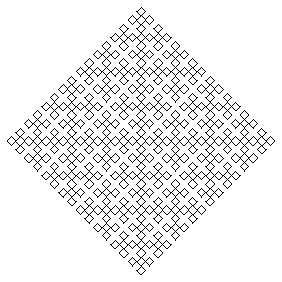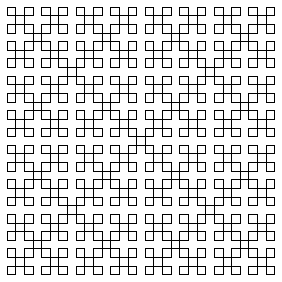| A kolam is a design
decorating the courtyards of homes in the villages
of southern India. Perhaps five millenia old, this artform is described in
many ancient Sanskrit texts. The designs can cover areas up to 3 meters by
3 meters. Occasionally they consist of small patterns repeated many times, but
more often thay are small drawings connected in very sophisticated ways. |
| Prusinkiewicz and Hanan
shows many of the more intricate kolams can be generated by
L-systems, and many are fractal.
Here are two examples, the Anklets of Krishna and the snake. |
|
| Click each image to see subpieces illustrated in colors. For both kolams, subtracting the central square,
what remains consists of 4 copies scaled by 1/2,
16 copies scaled by 1/4, and
64 copies scaled by 1/8. The smaller copies have the same size smallest squares
as the whole kolams, so of course they are not scaled copies of the whole kolam. In these cases, fractality is
suggested or metaphorical, and must not be taken too seriously for the first reason raised in
common mistakes. |
| The snake has axiom = F+xF+F+xF and production rule
x → xF-F-F+xF+F+xF-F-F+x, with angle 90°. |
| The Anklets of Krishna has axiom = -x--x and production rule
x → xFx--xFx, with angle 45°. |

